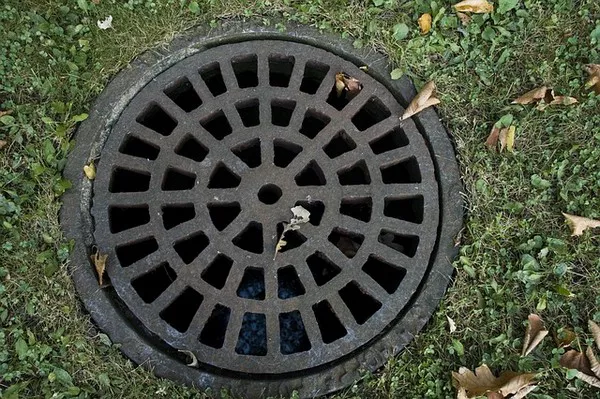Sewage treatment plants play a crucial role in maintaining public health and environmental sustainability by treating and purifying wastewater before it is released into natural water bodies. One of the unsung heroes in these treatment facilities is bacteria. These microorganisms are nature’s cleanup crew, playing a pivotal role in breaking down and removing contaminants from sewage. In this article, we will explore why bacteria are used in sewage treatment plants and their indispensable contributions to the wastewater treatment process.
The Sewage Challenge
Sewage, often referred to as wastewater, is a complex mixture of organic and inorganic substances, including human waste, detergents, oils, chemicals, and various microorganisms. The presence of these contaminants poses significant health risks to both humans and the environment. Therefore, it is essential to treat sewage before it is discharged into rivers, lakes, or oceans. This is where sewage treatment plants come into play.
Primary, Secondary, and Tertiary Treatment
Sewage treatment plants typically employ a multi-stage treatment process to remove impurities from wastewater. The process consists of primary, secondary, and tertiary treatment stages. While each stage serves a unique purpose, bacteria primarily play a pivotal role in the secondary treatment stage.
Primary Treatment: In the primary treatment stage, large solid materials and settleable solids are removed from the sewage. This is done through physical processes like sedimentation and screening. Although this stage helps reduce the amount of solids in the wastewater, it does not effectively eliminate dissolved and colloidal contaminants.
Secondary Treatment: The secondary treatment stage is where bacteria take center stage. This stage aims to remove dissolved and suspended organic materials, such as organic compounds and pathogens, from the wastewater. Bacteria are employed to break down these organic pollutants into simpler, more stable substances.
Tertiary Treatment: The tertiary treatment stage, which follows secondary treatment, further refines the treated wastewater to remove any remaining impurities. This stage often involves additional processes like filtration, chemical treatment, and UV disinfection. However, bacteria are still indirectly involved in the breakdown of residual organic matter.
The Role of Bacteria in Secondary Treatment
The secondary treatment stage in sewage treatment plants relies heavily on the activity of microorganisms, primarily bacteria, to transform organic pollutants into less harmful substances. There are two main processes within secondary treatment where bacteria play a critical role:
Aerobic Treatment: In aerobic treatment, oxygen is supplied to the sewage to create an oxygen-rich environment. This stimulates the growth of aerobic bacteria, which utilize oxygen to break down organic matter present in the wastewater. These bacteria convert complex organic compounds into carbon dioxide, water, and biomass. The biomass produced is then separated from the treated water through settling or other separation techniques.
Anaerobic Treatment: In anaerobic treatment, the sewage is kept in an oxygen-depleted environment, favoring the growth of anaerobic bacteria. These bacteria can break down organic matter in the absence of oxygen, producing methane gas and carbon dioxide as byproducts. While anaerobic treatment is less common than aerobic treatment in sewage treatment plants, it can be an effective method for handling specific types of wastewater, such as sludge digestion.
Benefits of Using Bacteria in Sewage Treatment Plants
The utilization of bacteria in sewage treatment plants offers several advantages, making them an indispensable part of the wastewater treatment process:
Effective Organic Matter Removal: Bacteria are highly efficient at breaking down complex organic compounds found in sewage. This ensures that the wastewater is effectively purified, reducing the risk of environmental pollution and safeguarding public health.
Energy Efficiency: Bacteria-driven processes are relatively energy-efficient compared to some chemical treatment methods. By harnessing the natural metabolic processes of bacteria, sewage treatment plants can reduce energy consumption and operating costs.
Environmental Sustainability: Bacteria contribute to the sustainability of sewage treatment plants by promoting the natural degradation of contaminants. This minimizes the need for harsh chemicals and reduces the environmental impact of wastewater treatment.
Sludge Reduction: Bacteria also aid in the reduction of sludge volume in sewage treatment plants. Through their metabolic activities, bacteria consume organic matter, which decreases the amount of solid waste that needs to be disposed of or treated separately.
Versatility: Bacteria are adaptable microorganisms that can thrive in a wide range of environmental conditions. This adaptability allows sewage treatment plants to handle varying types and loads of wastewater effectively.
Challenges and Considerations
While bacteria are invaluable in sewage treatment plants, there are certain challenges and considerations associated with their use:
Temperature and pH Sensitivity: Different types of bacteria thrive under specific temperature and pH conditions. Maintaining optimal conditions can be challenging, especially in regions with extreme climate variations.
Nutrient Availability: Bacteria require essential nutrients, such as nitrogen and phosphorus, for growth and metabolism. In some cases, these nutrients need to be added to the wastewater to support bacterial activity.
Competition Among Microorganisms: In a wastewater environment, various microorganisms, including bacteria, compete for resources. To ensure effective treatment, it is crucial to manage this microbial ecosystem to favor beneficial bacteria.
Microbial Diversity: Sewage treatment plants must maintain a diverse population of bacteria to handle a wide range of contaminants. Disruptions to this microbial community can impact treatment efficiency.
Conclusion
Bacteria are the unsung heroes of sewage treatment plants, driving the vital process of breaking down organic contaminants and purifying wastewater. Their efficiency, cost-effectiveness, and environmental sustainability make them indispensable in the secondary treatment stage of sewage treatment facilities. As we continue to address the challenges of urbanization and environmental protection, recognizing the crucial role bacteria play in sewage treatment reinforces the importance of sustainable wastewater management for the well-being of our communities and ecosystems. Efforts to optimize bacterial processes, manage microbial diversity, and enhance treatment efficiency will be essential as we strive for cleaner and healthier water resources in the future.

